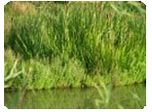Endangered Species | Environmental XPRT
Articles & Whitepapers
-
Using a Water pH Sensor to Improve Aquatic Ecosystems
Imagine a hidden language whispering within the watery realm. A language not of words, but of chemical whispers, dictating the very fabric of life for the countless creatures that call it home. This language speaks in terms of acidity and alkalinity, its dialect measured in a singular, potent phrase: pH. And to decipher this aquatic code, we turn to a modern-day oracle: the water pH sensor. ...
-
Temperature Profiling: A Key Tool for Monitoring Water Environments
The future of our planet and its inhabitants rests on the health of our water bodies. As climate change and human activity threaten the state of our lakes, rivers, streams, and oceans, temperature ...
News
-
What is loss and damage and how does it apply to water?
The past year has seen vulnerable communities across the globe experience numerous water-related disasters that have either threatened or completely decimated lives and livelihoods. Countries in the Global South are exposed to this type of disaster, ...
The harmful link between microplastics and algae blooms in the Great Lakes
Cleaner Water for Protected Species
New Passive Acoustic Monitoring Framework to Help Safeguard Marine Resources During Offshore Wind Development
U.S. Fish and Wildlife Service and Noaa Fisheries To Propose Regulatory Revisions To Endangered Species Act
Equipment & Solutions
-
Showcase
Floating Islands & Floating Treatment Wetlands
AquaBio :Floating Islands & Floating Treatment Wetlands - Biomimetic Bio-Reactors for your site. Floating Islands were inspired by Nature, in particular, by the floating peat bogs of Northern Wisconsin, which are associated with clean water and great fishing. Using Nature to cleanse Nature is a form of Biomimetics.










